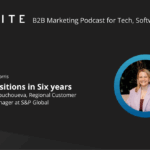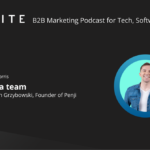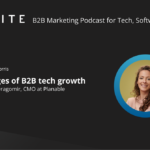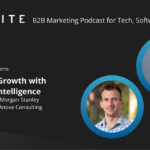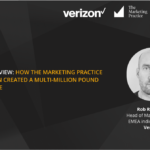Our FINITE Ambassador Forum on brand marketing in B2B technology companies was led by Siddharth Asokan, experienced marketing leader and CMO.
A group of fantastic senior marketers attended, and as a whole the group’s conversation resulted in some fantastic tactics, solutions and ways of thinking about brand marketing.
We don’t want to keep these to ourselves! Here’s what we covered in the forum:
Brand challenges faced by attendees:
- Allocation of resources – where should we put budget to prioritise brand?
- Refreshing a startup brand to reflect current stage of growth
- Difficulty making a case for brand without clear ROI
- Where does the responsibility for brand lie? Even though a good brand leads the demand, should brand sit under demand gen?
Is there a clear differentiation between brand marketing and other marketing activities, or is it all fully intertwined?
One attendee noted that as they have buy-in for content, they therefore have a decided content strategy. However, with a lack of buy-in for brand, they don’t have a brand strategy.
Another attendee explained how they separate verbal messaging and visual messaging in terms of brand refreshments. For example, they’re now working on updating their products to be more inline with their brand.
Is thought leadership brand marketing?
Someone in an enterprise-sized tech company mentioned thought leadership as an example of an activity owned by a brand team, but one that impacts the rest of the marketing function. Upon further discussion, the group agreed that thought leadership is losing credibility as the term is washed across all content types instead of original ideas.
Myth: Brand is expensive to build.
B2C makes branding seem exclusive to costly billboards and TV ads etc. In reality, foundational pieces are the brand, whereas creative is the agile approach to your brand goals, and this can be achieved through an array of tactics, most not as expensive as B2C.
Measuring the success of brand marketing
There’s no doubt trust and impression are challenges to measure, with success of brand marketing often only seen in the correlation between brand efforts and long-term business growth.
In particular, short term success, such as F2F event brand marketing, is hard to measure. While those you meet at a conference might turn into leads, it’s difficult to know how much your brand presence made an impact on those conversions.
Getting buy in from leadership for brand
Recent empirical research from the Ehrenberg-Bass Institute and the LinkedIn B2B Institute can provide a solid argument for increasing investment in brand marketing.
They coined the 95/5 rule, meaning in B2B only 5% of your target audience are in the market to purchase your solution at any given time. The remaining 95% should be kept warm and made aware of your solution through targeted brand marketing.
There is also evidence that companies that have more brand recall also have improved customer acquisition costs and cost-per-clicks. This showcases the synchronicity brand can have with performance marketing and other short-term digital activities.
We’ve actually had directors at these institutions on the FINITE Podcast. To learn more about their research, and to make a stronger case for brand in your B2B organisation, have a listen:
- The case for brand in B2B tech with Jann Schwarz, Snr Director at The B2B Institute
- To focus on acquisition or retention? That is the question. With John Dawes, Associate Director at Ehrenberg-Bass Institute for Marketing Science
What’s the key to brand marketing through conferences?
There’s no doubt taking a sponsorship for the sake of the booth doesn’t make sense, but sending someone to speak on the main stage is more important.
Booths are great if you have a differentiated offering and if you have something fun to showcase. Attending conferences just to be known in the sector is also important, even if your customers won’t be there.
Marketing’s responsibility is to give sales a platform to generate leads, but the onus is on them. Bring along star sales reps who will start conversations and build relationships with attendees.
So, make a splash and leave sales accountable for lead generation.
Is employee branding a part of brand marketing?
Employee branding and advocacy is often a marketing expense, but if you work with your talent team to make involvement an expectation, you’ll gain more involvement and enthusiasm. For example, add employee branding to your career level up framework to make marketing and branding a part of the company culture.
Keep an eye out for future FINITE events via email and our social channels. If you’re not a FINITE member yet, and you’re a B2B technology marketer, apply here.

